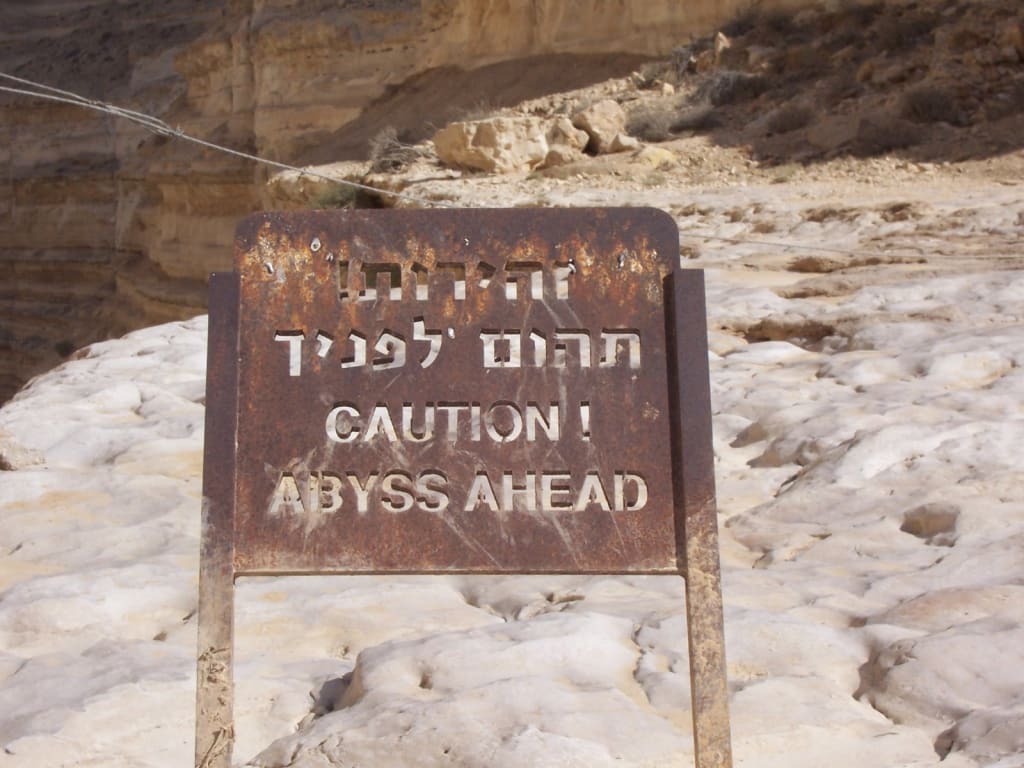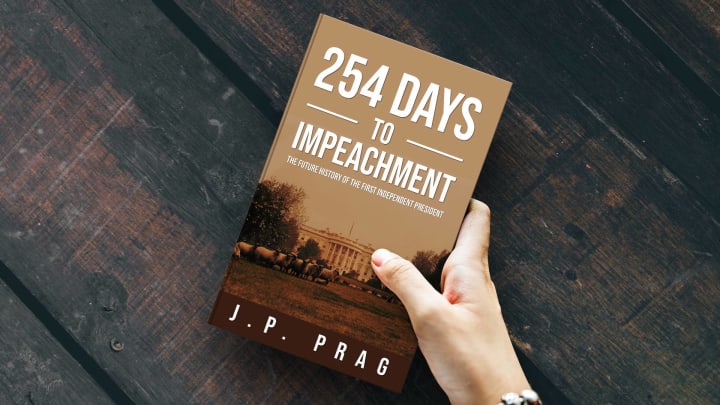
April 29th (Jerusalem, Israel) – Reporters from around the world had been sequestered into a separate room. There was a palpable tension among everyone there as we awaited any news, anything at all, even the smallest detail. Nothing leaked out from behind those closed doors, temptingly placed just a few meters away across the hall from us. Heavily armed security guards made sure we would not give into our yearnings and would instead maintain a respectful distance. Expressing their agitation, one among our group likened it to being in a waiting room at a hospital, hoping to hear an update about their loved one who was undergoing surgery.
Yet when the doors swung open less than an hour later and the President of the United States stepped through, we were quite surprised. Despite wanting to learn whatever we could from the proceedings, no one truly expected to get anything more than a brief at the end of the day, at the earliest. With a grim face, the President approached the podium and said:
Everyone... we have an agreement. For the first time in history, there is hope that we can achieve peace in the Middle East!
The President then gave a smirk as every reporter sat there completely dumbstruck. And then there was an explosion of sound as a cacophony of journalists launched into a slew of pent-up questions.
How We Got Here
Shortly after Inauguration Day, the American President reached out to many world leaders to assure them that the United States was still a partner in maintaining peace and order, despite the administration’s actions related to pulling troops out of the international arena and instigating the downfall of the United Nations. This included calls to the Prime Minister of Israel and the President of the Palestinian Authority, but ostensibly something was left out of the White House’s readouts of those conversations.
Sources close to the President later revealed that the American President asked each government head about holding a summit between the three leaders with no specific expectations. Both rulers were keen to meet with the new President, but not while the other one was present. Over the ensuing weeks, the President began to raise the pressure on each one individually, finally resulting in outright threats. For the Israeli side, the President said that the White House would acknowledge Israeli’s nuclear program, which in turn would trigger a law (22 U.S. Code § 2799aa) that would require the United States to immediately cut off all aid to the country. For reference, the noted law states in part:
...[N]o funds... may be used for the purpose of providing economic assistance... providing military assistance… or making guarantees, to any country... [that] delivers nuclear enrichment equipment, materials, or technology to any other country... or receives such equipment, materials, or technology from any other country on or after August 4, 1977...
While Israel’s nuclear capabilities are considered the world’s worst kept secret, every successive U.S. regime has not acknowledged it for this very reason, as well as to create an ambiguity around the situation in order not to trigger a nuclear arms race in the Middle East. Of course, the success of this policy is questionable, at best, considering all that has happened since with Iran.
Meanwhile, it has been reported that the President took a similar tactic with the Palestinian Authority. In this case, the President threatened to not only cut off all aid and funding, but to add the entire populous to the terrorist organization list, most especially their leaders, and freeze all of their assets everywhere in the world. Even this intimidation did not seem to be enough as just a few weeks ago the President alluded to the Palestinian leader being an unelected autocrat during a speech supposedly for Women’s History Month in Santa Rosa, CA. Many had puzzled over the content of that oration, but apparently it may have been a subtle warning to the Palestinians in order to get them to agree to this summit. Perhaps making references in public was enough to motivate the Palestinian faction into action in fear of what else may be overtly shared if they kept their intransigent stance.
All we know for sure is that just a few short days ago, the meeting between all the parties was officially announced, with more details to follow. However, nothing was announced ahead of time aside from an invitation to the media to attend the summit at an undisclosed location.
The First Agreement
Even prior to this announcement, not much was known about what the American President’s intentions were in relation to the Israeli-Palestinian conflict. As the hour got closer, the only detail that was revealed was that the White House wanted to limit who was going to be in the room to as few people as possible. From the American side, only the President, the ambassador to Israel, the chief of the Palestinian Affairs Unit, a representative from the Office of Security Negotiations and Agreements, and a military technician—for reasons that will be made clear later—made the trip. The Israelis and Palestinians decided to bring a mix of ministers, lead negotiators, and some military personnel, but still each abided by a previously unreported ten-person limit per side. As such, only 25 people in total were in the room as talks began.
After the President came out and announced the aforementioned surprising breakthrough and managed to quiet down the crowd, the military technician then rolled out a monitor. Turing it on, a map that included Israel, Gaza, the West Bank, and other disputed areas was visible. Most of the map was uncolored except for two specific blobs. On the west side, a blue blob was visible within the municipal borders of Tel Aviv. Towards the center, there was a similar green mark filling in Ramallah. The President then explained what we were looking at:
What you are seeing here is the first agreement between Israel and the Palestinian Authority. Every prior peace process has attempted to answer all questions in one go and failed when they could not. So, we are going to take a different approach. Instead of resolving all the issues at once, we are going to aim for “petite consensuses”, done one small bit at a time. And should negotiations fail at any point or we need a long break for whatever reason, the next starting point will be where we left off. We will never again begin from zero.
The President then expounded upon what had happened in the room. Apparently, the representatives from the Palestinian Authority had agreed that in any ultimate settlement Tel Aviv would be in Israel and that they had no claim on the city. In the same vein, the representatives from Israel had acquiesced that Ramallah would be in a future independent Palestinian state. Because of this, the President claimed, they could now build outwards from those starting points with the parties approving what would be in any final-decision agreement.
And this is where the President made a really astonishing announcement about the forthcoming sessions. The board we were looking at would be a live connection to the negotiating room, and as each agreement was made the monitor in the media room would update instantly. We could literally watch live as accords were made, making sure nothing could be hidden. We later learned that the screen in the negotiating room was a touchscreen with the capability to cut the region up into parcels as small as a house.
Behind the Scenes Methodology
While we in the press room were certainly flummoxed, those in the negotiating room were also taken completely unawares. According to one source who was in the room but wishes to remain anonymous, not one single person besides the President appeared to know any of this was coming. The President seemingly hoodwinked them all and then backed everyone into a corner by announcing the terms without even a discussion about the administration’s intentions. However, they had little recourse as the President’s initial threats used to get all of the parties to the table were still in effect and were being capriciously enforced.
According to the source, this happened right away. After laying out the plan that would be later explained to the press, the President dove right in and asked the Israeli Prime Minister about the country’s position on Ramallah. At first, the Prime Minister was reluctant to give any answer, but after a short while conceded that Ramallah—within its current municipal boundaries—would be part of a future Palestinian state without objection. With this, the President had the military technician in the room make the appropriate update on the interactive map.
The same did not exactly happen with the representatives from the Palestinian Authority. Despite the early contrition from Israel, the Palestinians did not appear to want to participate in the process as they considered it a farce. At first, the American President attempted to gently cajole them and asked them to explain any claim they may have over Tel Aviv. When none were forthcoming, the President eventually lost patience. The source then played a recording of the American President for this reporter (warning: strong language ahead):
Just stop this bullshit! There is no future world in which Tel Aviv is in Palestine, unless you are planning a mass genocide. Is that your intention? Do you want to announce to the world you support a Holocaust of the Jewish people?
The Palestinian President insisted that he was being maligned, misquoted, and misunderstood, and that neither he nor anyone in the Palestinian Authority would suggest such a thing. The American President was silent for a long moment, turning away from everyone else. Finally, spinning around, the President declared:
Fine, you know what, then here's the deal: if you are going to just keep fighting me on this process, I’m going to walk out to that room of reporters and tell them that the Israelis were willing to make massive concessions for peace and your response was you were going to raze Tel Aviv and commit an extermination of the Jewish people. I will tell them that there is no hope for peace because the Palestinians want nothing but war, and that the United States and the world are done with supporting their useless phony cause. And then I’m going to declare every single Palestinian group, business, and person under your regime a terrorist. Finally, I will completely destroy what little is left of your economy and declare unconditional military support for Israel, starting by taking all of the funding that was going to you and giving it to them.
At first, the Palestinian contingent balked at this outright extortion. After much haranguing, the Palestinian President said he was insulted by such remarks, but did not believe this tale, saying he was calling the Americans’ bluff. The American President then pulled a sheaf of papers out of a bag and showed it to everyone in the room. The offered document was an Executive Order that the administration had already written up with the details exactly as the President had described them. All it required was the Commander-in-Chief’s signature to immediately take effect. There was some wavering, but it was not until the American President was halfway out the door that the Palestinians called the President back and finally, reluctantly agreed that Tel Aviv was part of Israel and would remain so in any concluding treaty. It was at this point that the President reportedly cheered with what was described as “snide” delight, updated the map, and immediately walked out the door to tell us in the press room what had transpired.
Future Negotiations
What was left unsaid was the President must have had a similar Executive Order ready for the Israelis if they did not play ball. While it did not come to that, the administration was surely prepared for such a possibility.
Now the question seems to be: what happens next? The American President said that now that the process had been laid out and agreed upon, it did not require the Commander-in-Chief’s personal attention every single day. Instead, the rest of the team would continue on in the White House’s stead with a focus on agreements and putting disputes “in the parking lot” until they could be explored later on. Said the leader of the free world:
I don’t expect this to be easy, and there are a lot of questions more difficult than land-control that we have to answer. There are things like the “right of return”, reparations, citizenship, free movement, security, and more. I’ll step in when I need to, but I believe it is most important for the parties to make these decisions among themselves with us just acting as mediators... and prodding them a little bit when need be.
Time will tell if this approach is any better than all the other ones that have fallen apart before any progress was made, but it is clear that this is a novel approach that may yet make that elusive breakthrough towards actual peace.

The above piece is an excerpt from the speculative fiction novel 254 Days to Impeachment: The Future History of the First Independent President by J.P. Prag, available at booksellers worldwide.

Learn more about author J.P. Prag at www.jpprag.com.

254 Days to Impeachment is a work of mixed fiction and nonfiction elements. With the fiction elements, any names, characters, places, events, and incidents that bear any resemblance to reality is purely coincidental. For the nonfiction elements, no names have been changed, no characters invented, no events fabricated except for hypothetical situations.
About the Creator
J.P. Prag
J.P. Prag is the author of "Aestas ¤ The Yellow Balloon", "Compendium of Humanity's End", "254 Days to Impeachment", "Always Divided, Never United", "New & Improved: The United States of America", and more! Learn more at www.jpprag.com.






Comments
There are no comments for this story
Be the first to respond and start the conversation.